A Turramurra Vet Pet Care Article
Help! My Cat Keeps Vomiting up Hairballs!
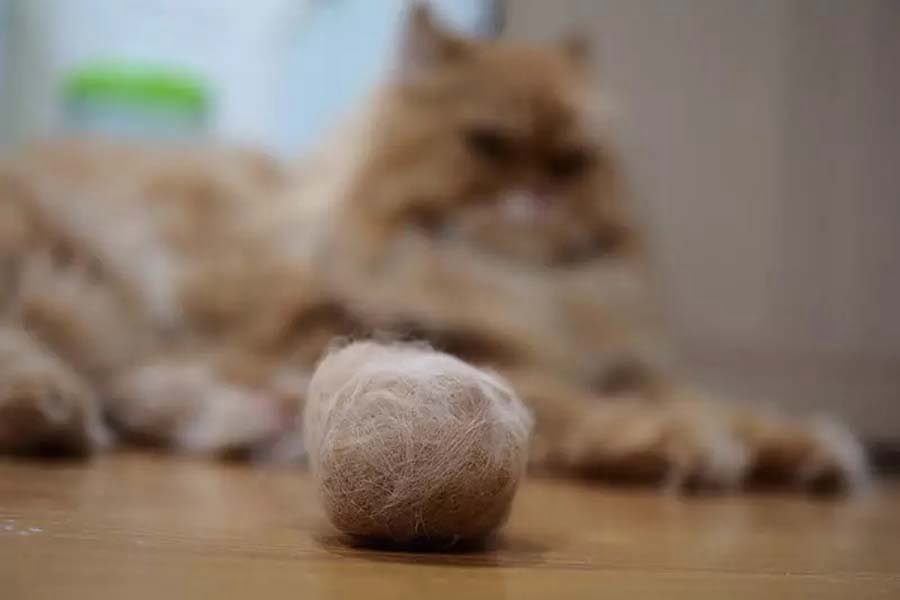
Help! My Cat Keeps Vomiting up Hairballs!
by Freya Britt-Lewis, Customer Care and Pet Health Writer
When your family cat has a hairball (known officially as a trichobezoar), the problem can inevitably be more complicated than a few thrown up slimeballs and unpleasant cleanups. Frequent hairball vomits can sometimes indicate your cat has an underlying problem that your vet needs to investigate further.
In most healthy cats during grooming, when hair gets caught on the rough tongue and swallowed during grooming, it should be transferred through the stomach and intestines, then out of the body via the faeces.
If your cat is vomiting hairballs frequently, it is important to rule out an underlying cause in these cases.
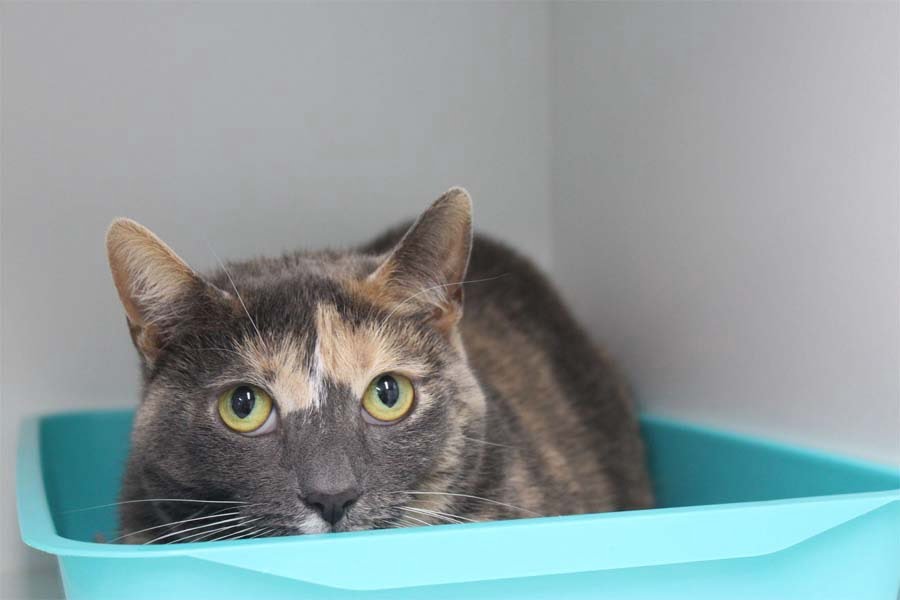
If you notice your feline family member is bringing up hairballs, bring them in for a veterinary consultation.
Causes
The cause of frequent hairball production can range from:
- Long-haired cats ingesting excessive amounts of hair due to inadequate or intolerance of brushing
- Intestinal obstruction
- Partial or complete gastro-intestinal obstruction can prevent the normal passage of hair through the digestive tract
- Foreign body ingestion or even an oversized hairball that cannot pass through the gastrointestinal tract can in turn cause more hairballs to be vomited by the cat
- A growth (cancer) in the gastro-intestinal tract can prevent hair passing through
- Delayed gastric emptying disorders
- If the gut motility is slow or stomach emptying into the duodenum is delayed for some reasons, hairballs are more common
- Dietary intolerance
- Like humans, cats can develop an intolerance to their diet which can cause chronic vomiting and hairball production
- Inflammatory bowel disease
- Inflammation of the bowel can interfere with nutrient digestion and absorption, leading to abnormal hair accumulation in some cases
- Overgrooming
- Stress and/or obsessive compulsive disorder can lead to overgrooming
- Licking is a form of itch-relief in cats, so hairballs can sometimes indicate allergic skin disease caused by food, environment or flea allergy dermatitis
- Internal parasites
- Worms in the gastrointestinal tract can result in hairball formation as they interfere with the normal passage of ingesta through the gut
- Bacterial gastritis
- Cats frequently have a bacteria known as Helicobacter pylori living in their stomachs which can contribute to chronic vomiting and hairball production
- While many cats have this bacteria with no associated clinical signs, it is often seen in high numbers in stomach biopsy in ‘chronic vomiters’ and treatment with a combination of antibiotics and antacids can reduce the vomiting frequency
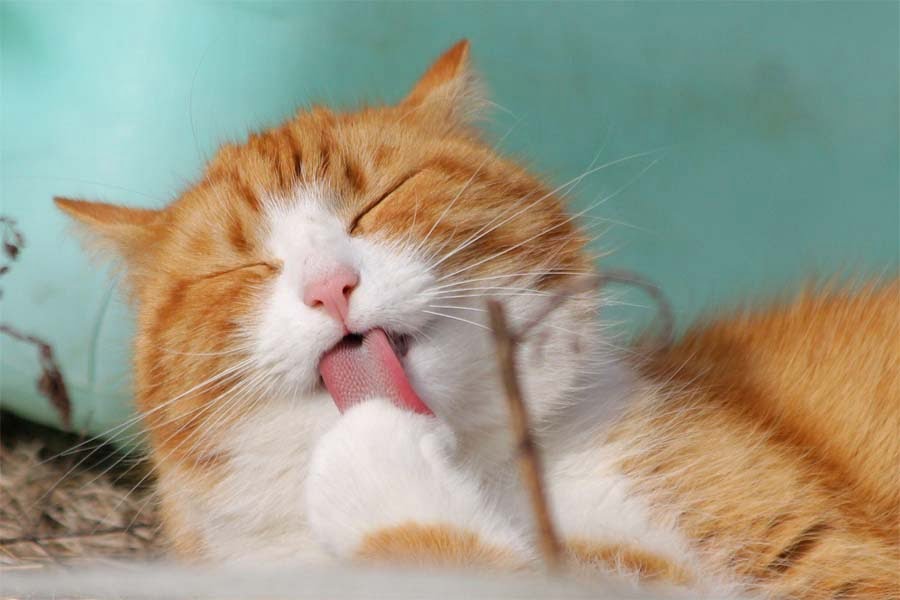
With long haired cats, ensure you are brushing them regularly in order to reduce the likelihood of developing hairballs. Long hair has been bred into our cats over time, so sometimes they need a helping hand to keep themselves well groomed!
Diagnostics
When your cat presents to the vet with hairballs, along with a thorough diet and parasite control history, a detailed physical examination and behaviour assessment, diagnostic investigations to determine potential causes will be recommended by your vet.
Depending on your vet’s assessment, these may include:
- Blood testing +/- urinalysis
- Faecal testing
- Skin cytology
- Radiology (x-rays/ultrasound)
- Food elimination diet trial
Test recommendations will vary depending on your cat’s individual case. Sometimes no specific underlying medical cause is found and in cats with long-haired coats, it can be a matter of simply clipping the coat very short to reduce the amount of hair ingested and seeing if the vomiting subsides.
Prevention of hairballs
Hairball prevention methods vary in their level of effectiveness and are assessed on a trial basis.
- 1. Parasite control
- Keeping up-to-date with your cat’s intestinal worming with either Milpro tablets or Profender spot-on every 3 months will prevent gastrointestinal worms
- Flea and tick prevention with Bravecto spot-on every 2 months is advised all year round with a Seresto collar for cats that go outdoors (lasts 4 months) to reduce overgrooming associated with fleas
- 2. Brushing
- If your cat will tolerate it, brushing your cat’s coat daily will significantly reduce the amount of hair that is ingested during self-grooming
- 3. Hairball control diet
- Hill’s pet nutrition have formulated a diet to help avoid hairball formation in cats
- 4. Laxapet gel
- This is an over-the-counter oral gel available at Turramurra Veterinary Hospital that assists in increasing the gut motility to help remove ingested hair through the faeces
- 5. Cat clip
- Long haired cats can benefit from a full body clip (2-3 times per year) which is performed under sedation with veterinary supervision
- Cat clips need to be very short to prevent excessive hair ingestion and to protect the skin from nicks during clipping
Hill’s Science Diet Hairball Control
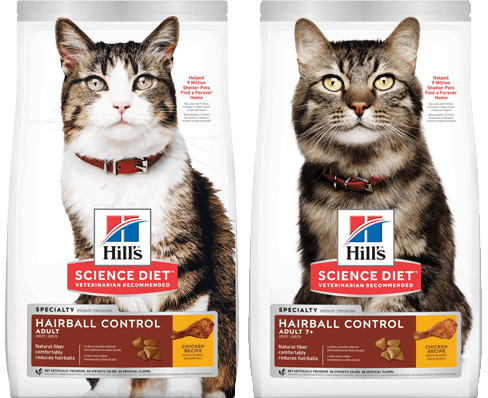
Hills’ Science Diet Hairball Control is a dry kibble that provides the nutrition needed to help avoid hairball formation in your cats. These come in options for cats under 7 years, as well as our senior cats of 7 years plus.
Troy Laxapet Gel
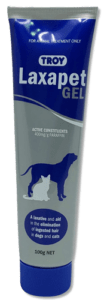 Troy Laxapet Gel is a palatable laxative used to aid the elimination of ingested hair in dogs and cats.
Troy Laxapet Gel is a palatable laxative used to aid the elimination of ingested hair in dogs and cats.
If you notice your cat is throwing up hairballs, we recommend giving our friendly Customer Care team a call on (02) 9988-0198 to book in for a veterinary consultation.

